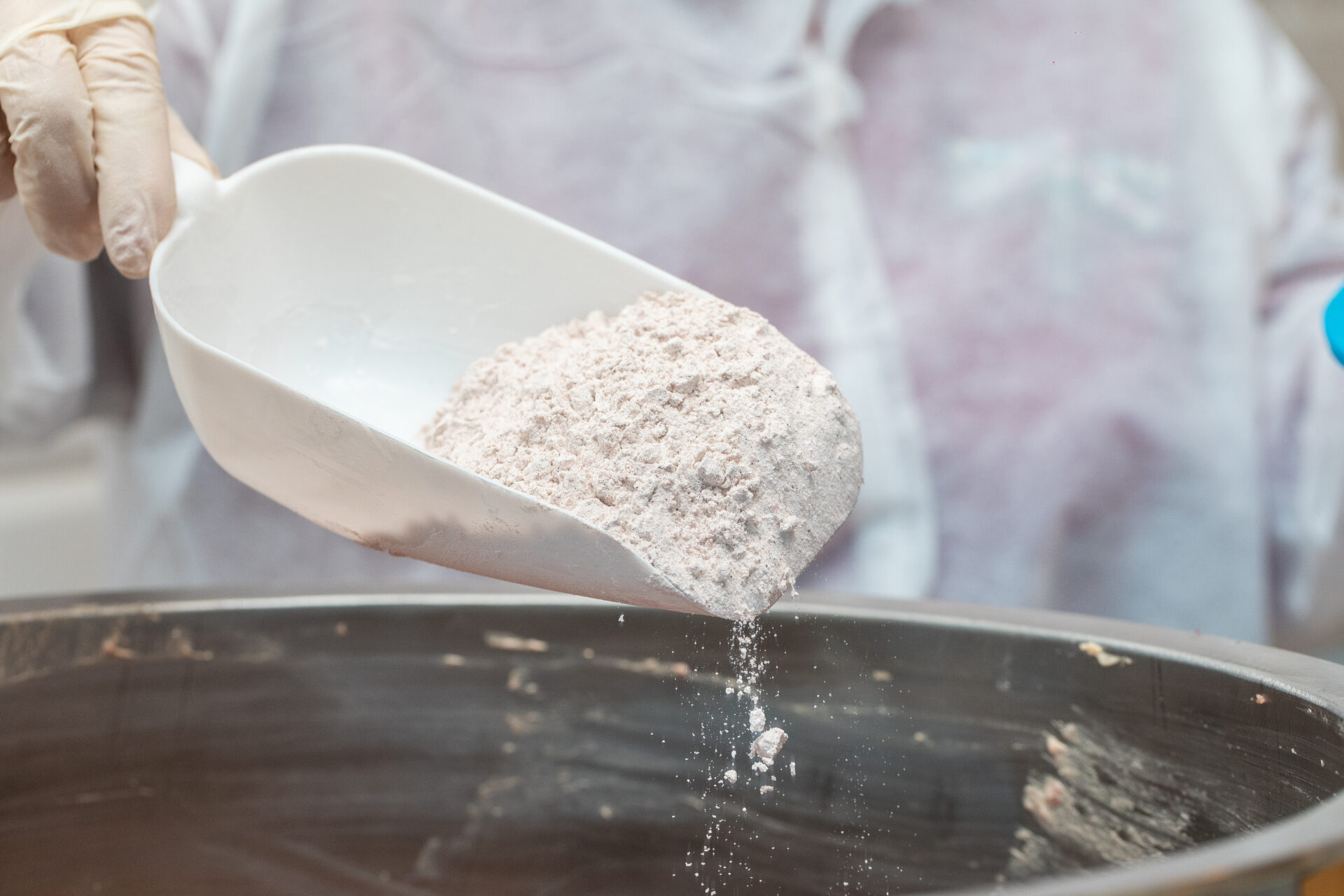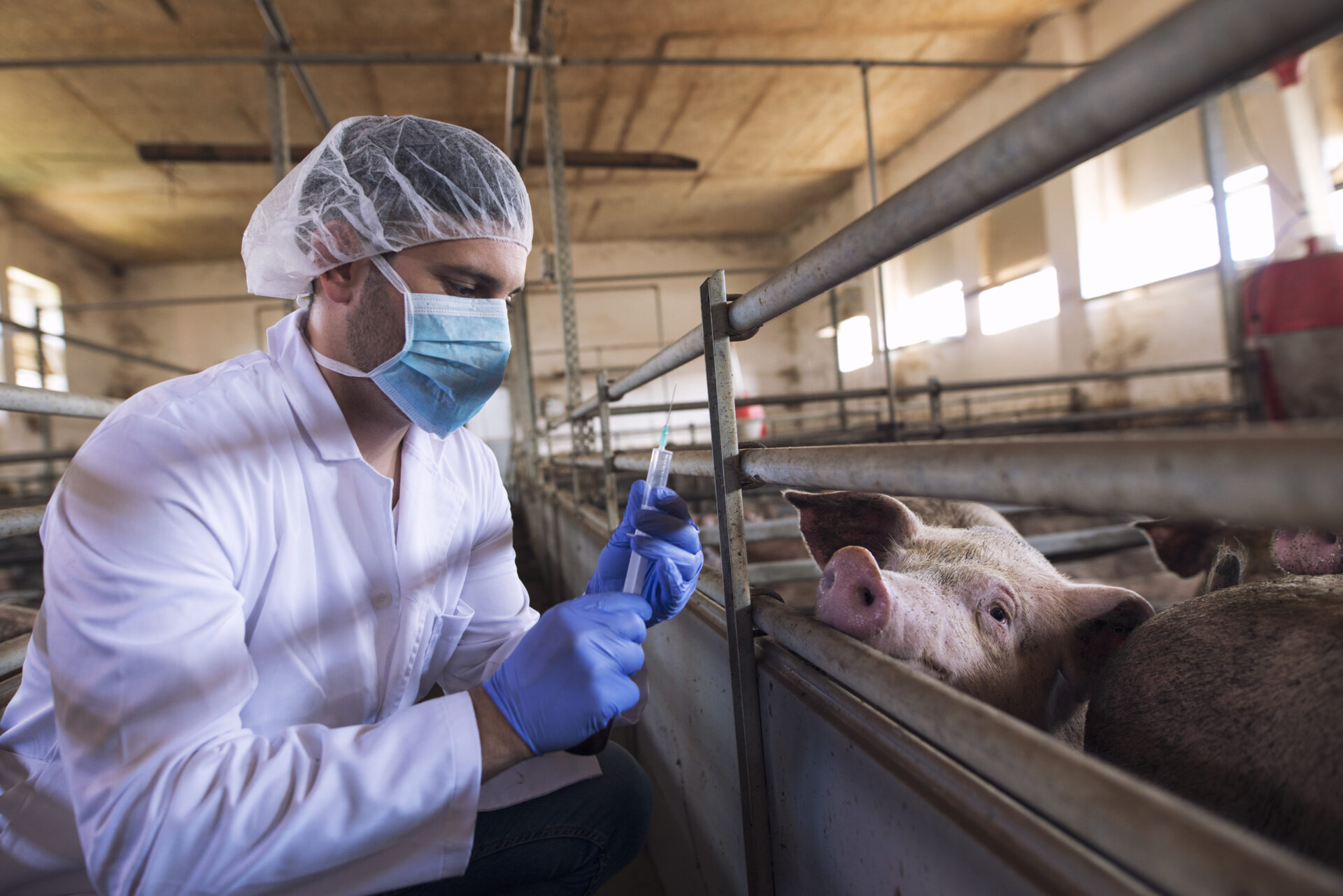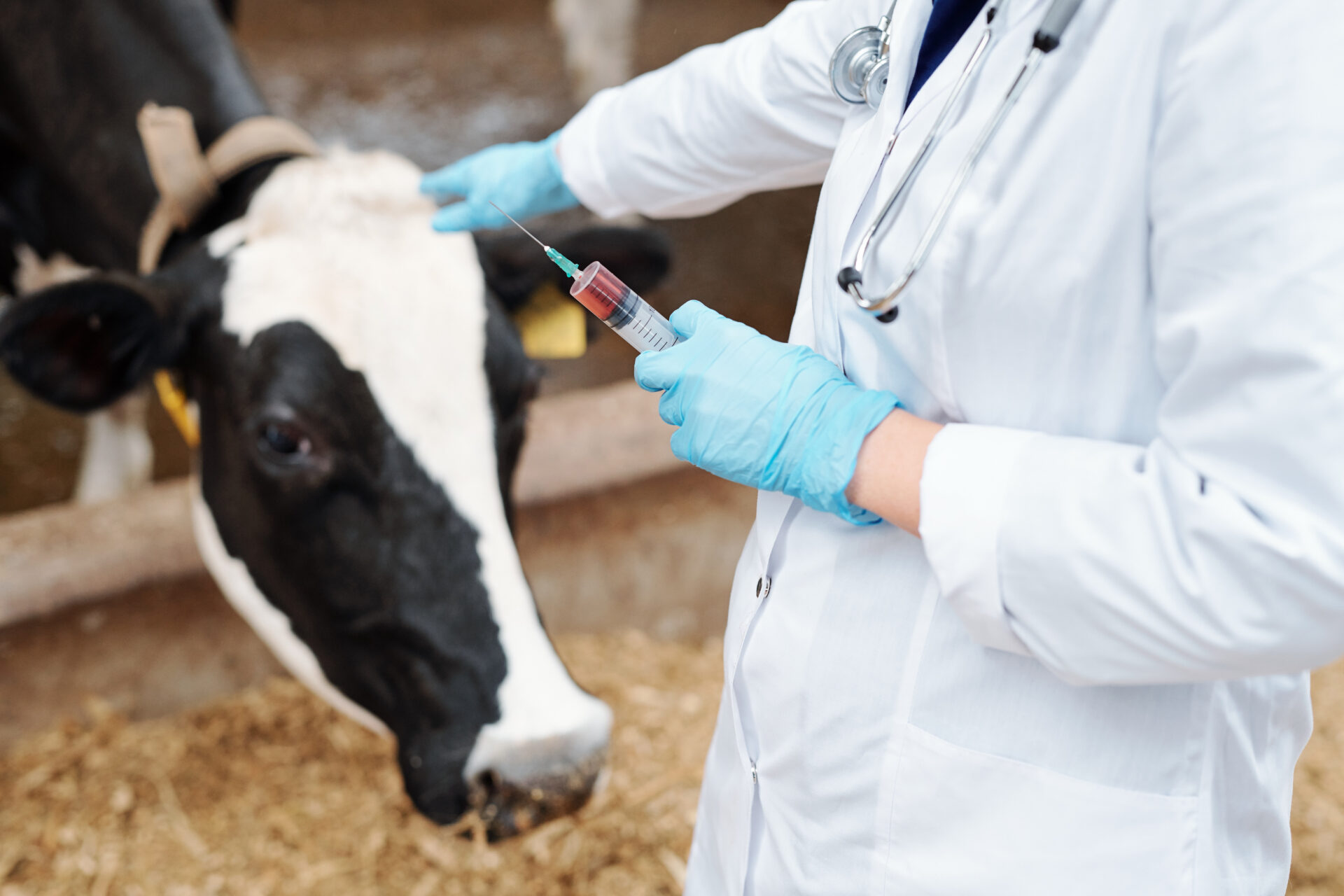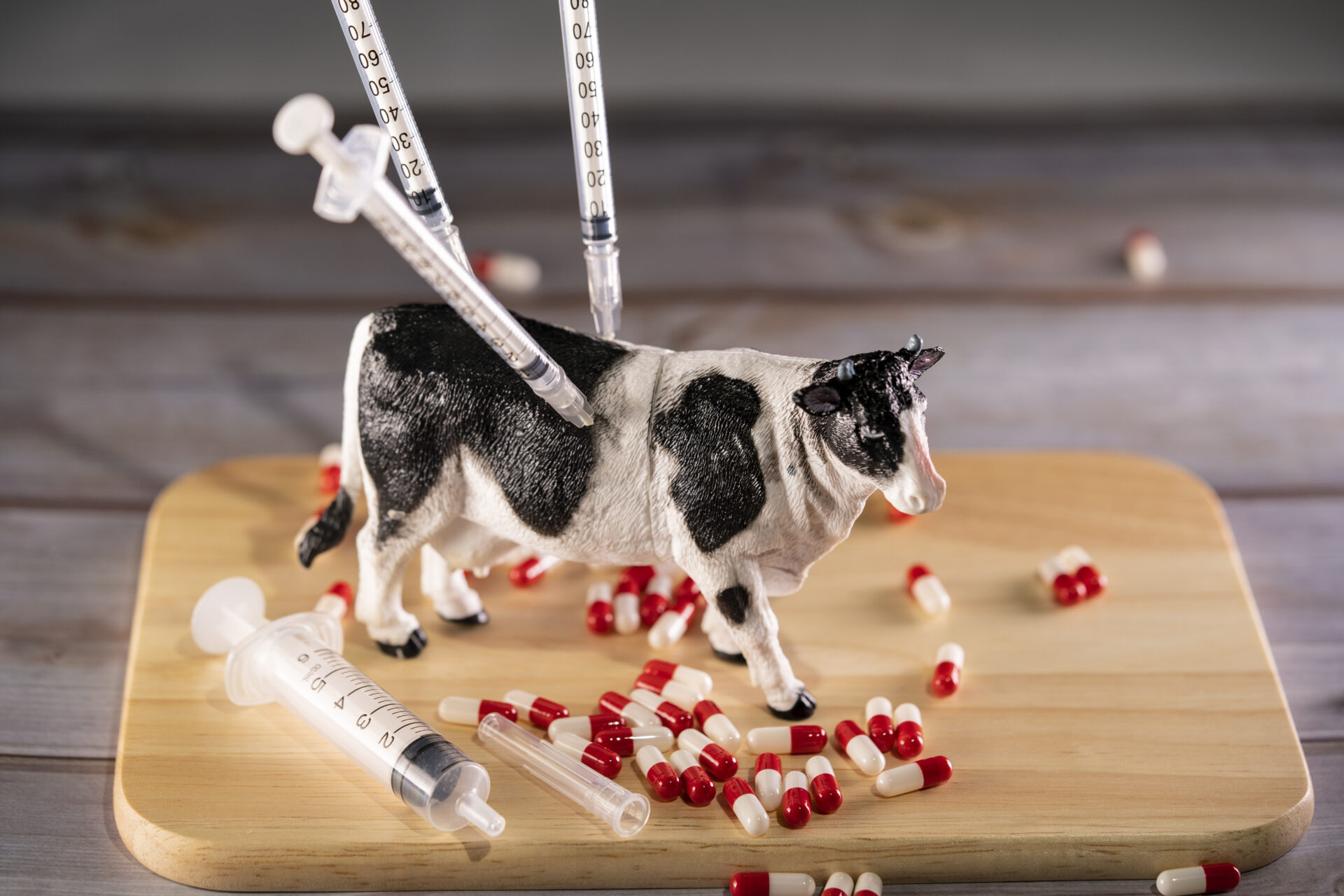Based on the provided charts, this analysis examines the trends in imported finished veterinary antibiotic products (powder form) from 2022 to 2024, focusing on import values over time, key exporting countries, and the top 10 active pharmaceutical ingredients (APIs).
- Import Values Over Time (2022-2024):
The “IMPORT VALUES $ – TIME” chart clearly illustrates a significant declining trend in the total value of imported finished veterinary antibiotic powder products over the three-year period.
- In 2022, the import value peaked at $73 million.
- This figure decreased to $56 million in 2023.
- By 2024, the downward trend continued, with imports valued at $47 million.
This represents an approximate 35.6% reduction in total import value from 2022 to 2024. This consistent decline suggests several potential underlying factors:
- Stricter Import Regulations/Policies: Governments might be implementing tighter controls on antibiotic imports, possibly to encourage domestic production, reduce antibiotic resistance, or rationalize usage.
- Shifting Market Demand: Changes in livestock farming practices, herd sizes, or disease prevention strategies could lead to a decreased need for imported antibiotics.
- Inventory Management: Importers might have accumulated significant stock in 2022, leading to reduced orders in subsequent years.
- Increased Domestic Production: A rise in local manufacturing of veterinary antibiotics could naturally displace imported products.
- Price Fluctuations: While less likely to account for such a drastic value drop across multiple years unless global prices for these specific products have fallen substantially, it remains a possibility.
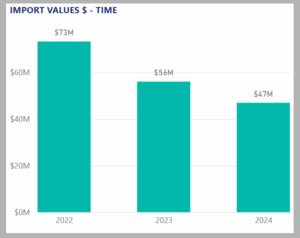
- Import Values by Country:
The “IMPORT VALUES – COUNTRY” pie chart highlights the primary origins of these imported products, revealing a concentrated supply chain:
- China is the dominant supplier, accounting for a substantial 41.78% of the total import value, equivalent to $74 million. This underscores China’s critical role in the global supply of veterinary antibiotics.
- Thailand follows as the second-largest source, contributing 17.86% ($31 million), indicating a significant regional dependency.
- Bulgaria ranks third with 9.43% ($17 million), representing a notable European supplier.
- Other significant, albeit smaller, contributors include the Netherlands (4.98%), Italy (4.45%), South Korea (3.82%), the United Kingdom (3.58%), the United States (3.51%), and Belgium (1.69%).
- Algeria registered 0% of import value, suggesting negligible or no imports from this country.
The heavy reliance on China, in particular, could present supply chain vulnerabilities, emphasizing the need for diversification or strategic inventory planning.

- Top 10 Imported Active Ingredients:
The bar chart detailing the top 10 imported finished veterinary medicines (by value, based on their key active ingredients) provides insight into the most sought-after antibiotic compounds:
- Tiamulin Hydrogen Fumarate leads by a significant margin, with an import value of $49 million. This highlights its high demand, likely due to its effectiveness against specific prevalent animal diseases.
- Halquinol ranks second at $30 million.
- Doxycycline Hyclate takes the third position with $22 million.
- Other prominent finished products in the top 10 include those containing Amoxicillin (as Trihydrate) and Chlortetracycline.
The diversity within the top 10 — featuring pleuromutilins (Tiamulin, Tilmicosin), tetracyclines (Doxycycline Hyclate, Chlortetracycline), and macrolides (Tylvalosin) — reflects a broad spectrum of therapeutic needs in animal health. The high values for Tiamulin and Doxycycline suggest their widespread application in veterinary practice.
Conclusion:
The import market for finished veterinary antibiotic powder products showed a clear decline in total import value during the period 2022–2024. The supply chain remains highly concentrated, with China as the dominant supplier—creating potential strategic risks for Vietnam’s animal health industry. Within this segment, Tiamulin Hydrogen Fumarate emerges as the most significant active ingredient in terms of import value.
This downward trend in imports may reflect changes in regulatory policies, a gradual strengthening of domestic production capacity, or evolving market demands in livestock husbandry. Understanding these dynamics is essential for anticipating future developments and preparing strategic responses.
As a trusted partner, Alau Vietnam provides comprehensive market intelligence and data-driven insights in the livestock and veterinary medicine sectors. Our research helps businesses, policymakers, and stakeholders navigate market shifts, assess risks, and identify opportunities to ensure sustainable growth in animal health
